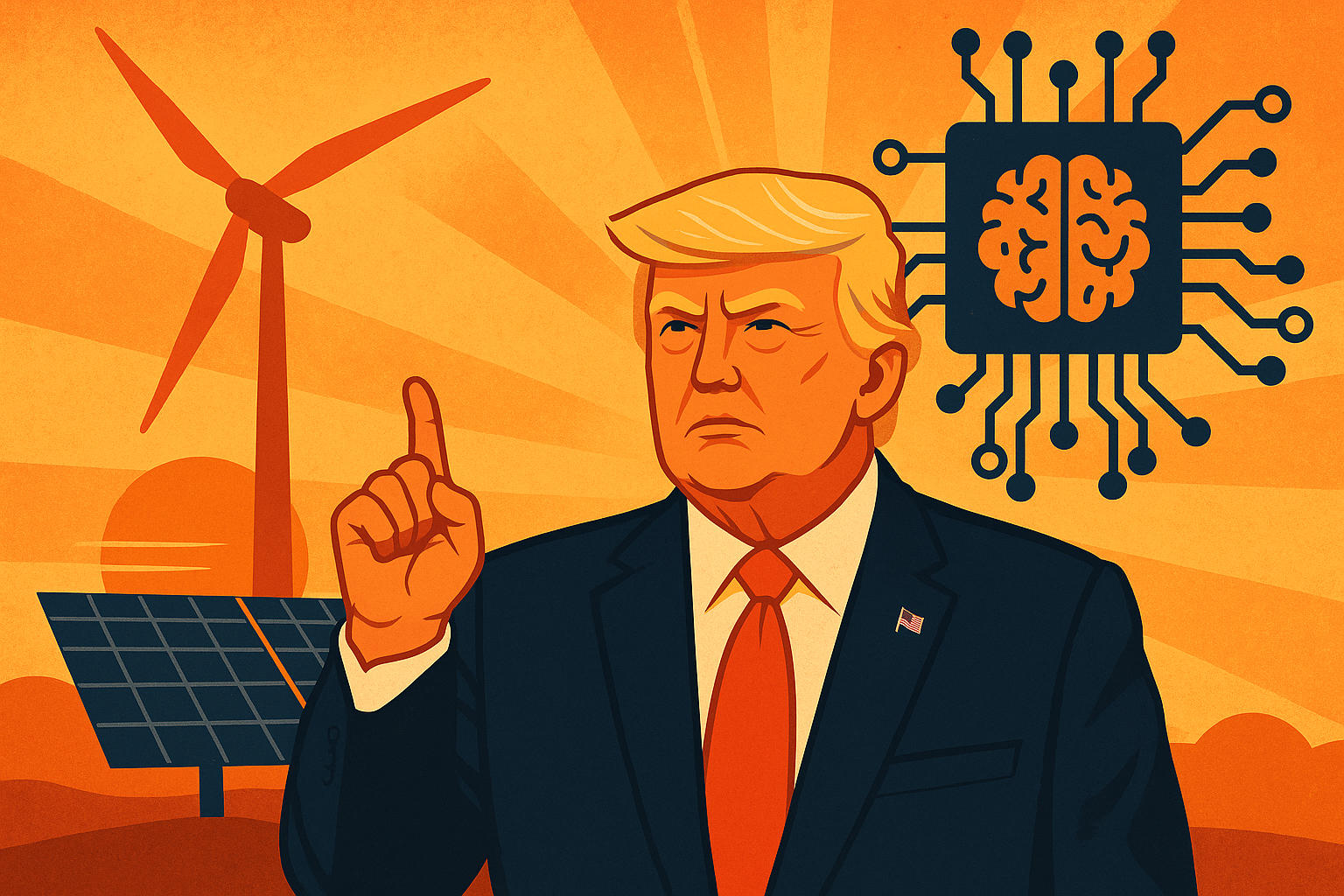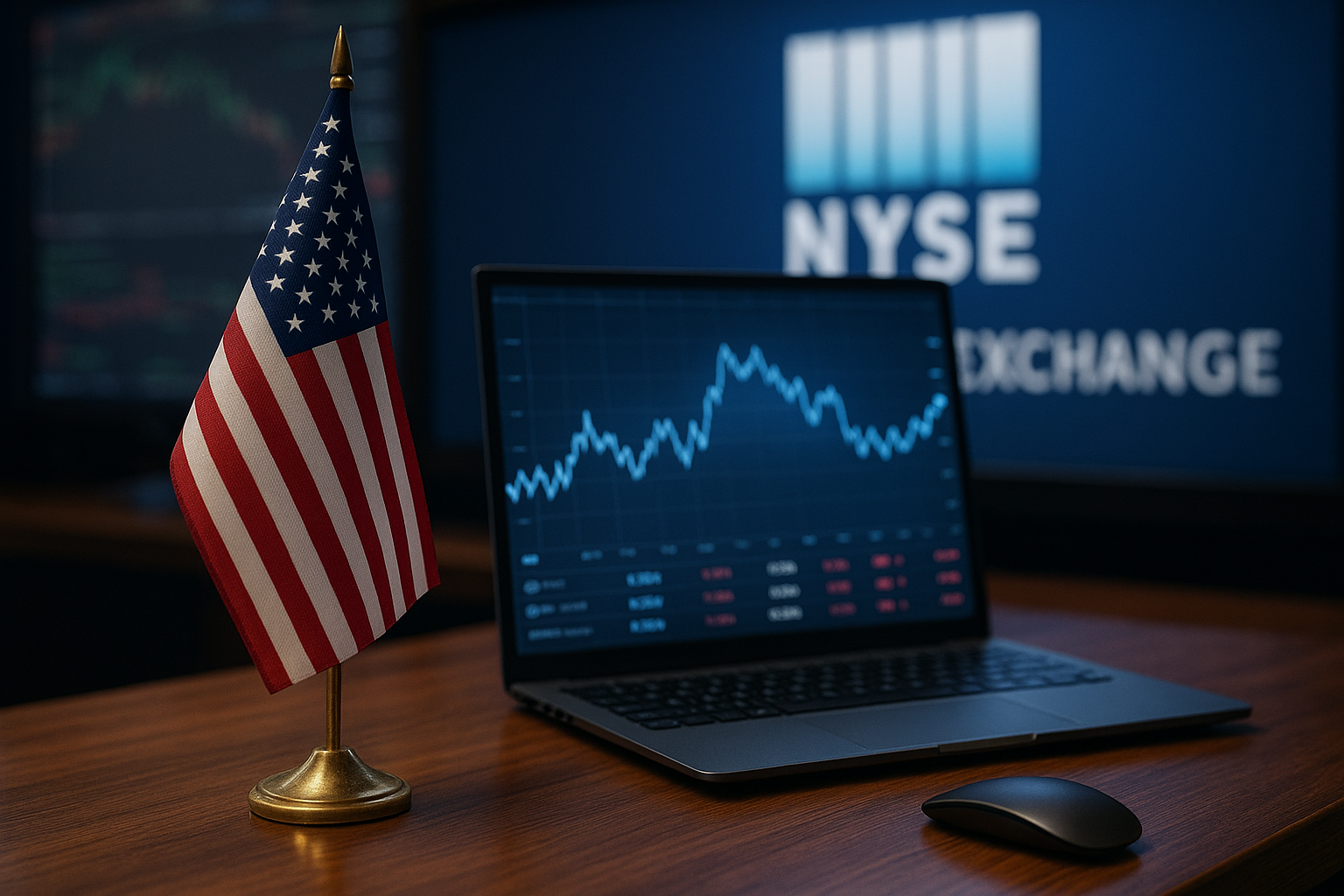Just as Wall Street recalibrates expectations on tech valuations, President Trump is preparing to roll out a sweeping $70 billion investment package aimed at America’s AI and energy infrastructure, fueling what many analysts now call the “second wave of the AI boom.” The formal announcement is expected between July 15–16, and it’s already sending tremors through the semiconductor and clean energy sectors.
This policy signal, first reported by The Wall Street Journal and later confirmed by Yahoo Finance and Investopedia, comes on the heels of a blistering month for AI equities. Nvidia, AMD, and Super Micro Computer hit fresh all-time highs, while renewables and battery-tech stocks gained momentum ahead of expected subsidies.
As institutional capital hunts for long-duration AI and green tech plays, Trump’s proposal could redefine near-term positioning for investors in both technology and energy-transition portfolios.
A Political Catalyst Supercharging AI Momentum
Investor sentiment around AI has already been running hot in 2025. According to Goldman Sachs, AI-linked market cap across S&P 500 tech firms grew by $2.7 trillion YTD, with chipmakers and infrastructure providers leading the surge.
Now, Trump’s investment pledge—which insiders suggest includes tax breaks, federal R&D funding, and manufacturing subsidies—could accelerate that trajectory. Early reports indicate the funding will be split between:
- $42B for AI innovation — spanning chips, quantum computing, and federal AI deployments.
- $28B for energy — including nuclear tech, solar supply chains, and EV battery production.
A senior official involved in the plan, speaking to The Wall Street Journal, said the goal is to “secure U.S. leadership in both intelligence and energy for the next generation.” The move is seen as a direct response to China’s rapid tech development and Europe’s clean energy push.
Why This Matters for Investors
If passed, this stimulus package would represent one of the largest tech-focused federal investments since the CHIPS and Science Act, potentially unlocking exponential growth for companies across multiple verticals:
📈 Chipmakers & Hardware Infrastructure
Companies like Nvidia (NVDA), Advanced Micro Devices (AMD), and Marvell Technology (MRVL) stand to gain as demand for high-performance computing and AI accelerators explodes. The $42B earmarked for AI includes direct incentives for data center expansion and R&D, which may further boost margins and topline growth.
🔋 Clean Energy & Battery Tech
The $28B energy component is expected to benefit firms like Tesla (TSLA), Enphase Energy (ENPH), Albemarle (ALB), and NextEra Energy (NEE), especially those tied to battery production, grid modernization, and domestic solar components. Policy analysts at McKinsey & Co. forecast that domestic clean energy manufacturing could double by 2027 if subsidies align with existing infrastructure.
💻 AI Software & Data Platforms
Beyond hardware, expect renewed interest in AI-native software companies and data orchestration platforms like Palantir (PLTR), Snowflake (SNOW), and emerging players in GenAI and vertical SaaS.
Future Trends to Watch
- Legislative Speed: Market volatility may hinge on how fast Congress greenlights the proposal. While the administration is confident in bipartisan support, political infighting could stall implementation.
- IPO Pipeline Boost: Venture-backed AI and clean tech startups may fast-track IPO timelines to capitalize on investor interest and policy tailwinds.
- China Watch: Beijing is expected to respond with its own incentives. Tech decoupling and trade restrictions may intensify, which could benefit U.S.-centric suppliers but disrupt global tech value chains.
Key Investment Insight
Investors should watch policy rollout timelines and procurement details closely. Companies with existing federal contracts or scalable production capabilities are best positioned to absorb near-term gains. Tactical plays include:
- Overweighting semiconductor ETFs (e.g., SOXX, SMH) and energy innovation funds (e.g., QCLN, ICLN).
- Monitoring government contract awardees and DOE/NIST announcements for early winners.
- Balancing risk with exposure to infrastructure REITs or defensive clean tech amid rising political uncertainty.
Stay ahead of every major shift in AI, energy, and tech policy. Follow MoneyNews.Today for real-time, investor-focused coverage you won’t find anywhere else.





